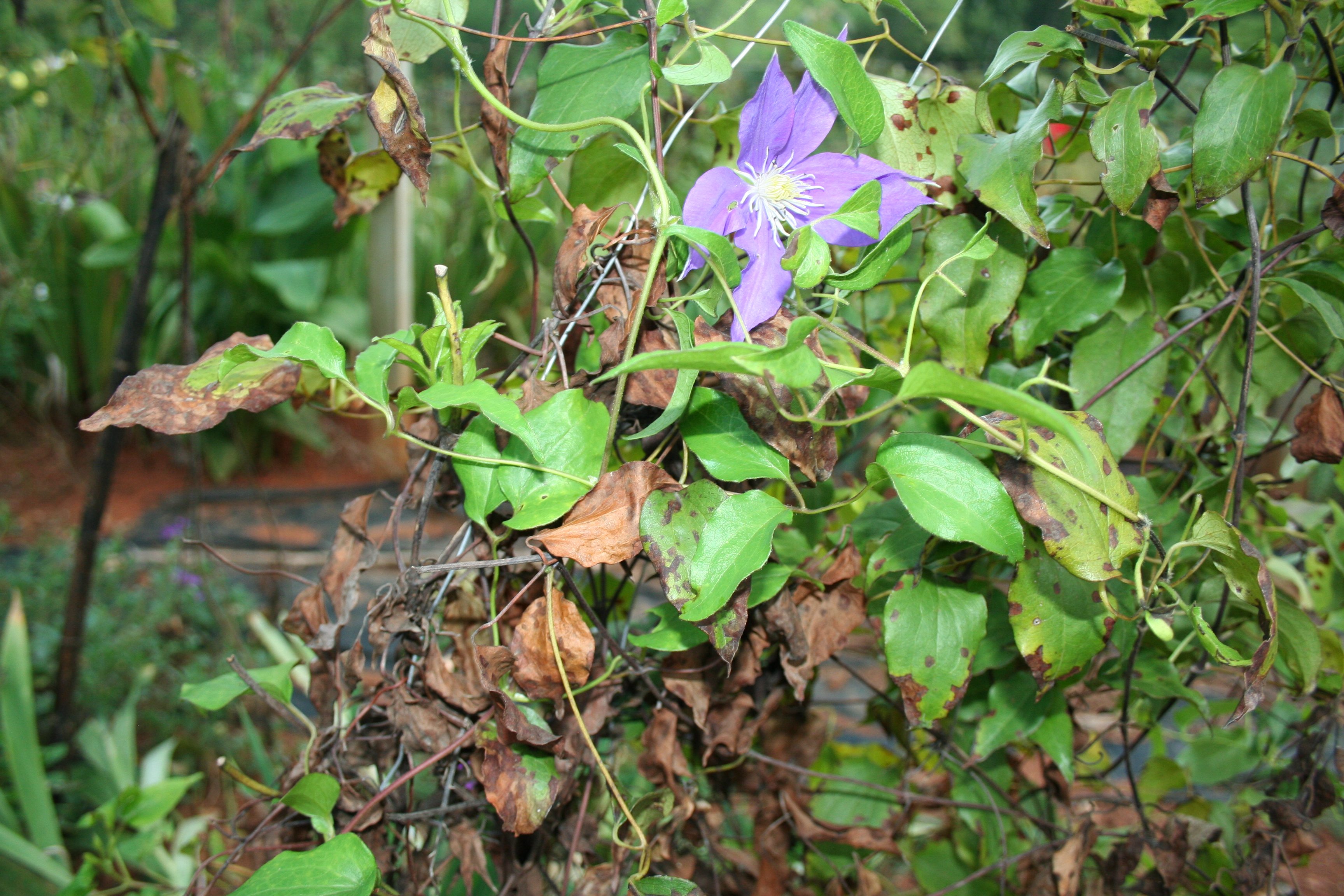Clematis Wilt Treatment - How To Prevent Wilt In Clematis Vines


Clematis wilt is a devastating condition that causes clematis vines to shrivel and die, usually in early summer just as the plants are beginning to show vigorous growth. There is no chemical clematis wilt treatment, but there are several things you can do to help the plant survive. Continue reading to learn more about what causes clematis wilt and how to prevent it.
What is Clematis Wilt?
The first step in treating or preventing clematis wilting is becoming familiar with the issue and its causes. So what is clematis wilt? Clematis wilt, also called clematis leaf and stem spot, is a fungal disease that progresses rapidly. A careful observer may see black spots on the leaves and stems as the disease begins, but the symptoms often go undetected until the entire stem wilts and dies.
What Causes Clematis Wilt?
Learning what causes clematis wilt is important in its treatment and prevention as well. Clematis wilt occurs when a fungus infects a clematis stem near the soil line. The fungus causes lesions, which cut off the vine's flow of water through the stems, and all parts of the plant above the injury wilt and die. A variety of fungi can cause clematis wilt.
How to Prevent Wilt in Clematis
Keeping the plant healthy goes a long way toward preventing clematis wilt. Plant the vine in neutral to slightly alkaline soil in a location protected from strong winds that might damage the vines. The roots should be shaded or under a layer of mulch and the upper part of the vine needs full sun. When you plant the vine, bury it so that at least two buds along the stem are underground. This helps the vine develop a strong root system to nourish the plant. Keep the soil evenly moist to prevent stress. Water the soil rather than the vine, and water early in the day so that any moisture that splashes onto the plant will have plenty of time to dry before sunset. In addition, there are some small-flowering clematis vines that are resistant to clematis wilt, including Clematis macropetala, Clematis montana, Clematis viticella, and Clematis alpine.
Clematis Wilt Treatment
Damage is most often seen in early summer and during periods of damp weather. Prune out damaged parts of the vine to help prevent the spread of the fungus. Even when the vines are ravaged by the disease, the roots generally survive and the plant sends up new shoots the following season. Good fall cleanup is an important part of treating and preventing clematis wilting. Trim affected vines as close to the ground as possible, and remove and destroy all fallen vines and leaves.
Gardening tips, videos, info and more delivered right to your inbox!
Sign up for the Gardening Know How newsletter today and receive a free copy of our e-book "How to Grow Delicious Tomatoes".

Jackie Carroll has written over 500 articles for Gardening Know How on a wide range of topics.
-
 My Homemade Orchid Fertilizer Always Brings More Blooms – Here's The Easy Recipe That Transforms Plants
My Homemade Orchid Fertilizer Always Brings More Blooms – Here's The Easy Recipe That Transforms PlantsScientist-turned-gardener Mary Ellen Ellis shares her tried-and-tested DIY orchid fertilizer recipe, plus more ingredients to try for healthy, happy plants.
By Mary Ellen Ellis
-
 Looking For Plants To Give You The Soft And Fuzzies? Try These 5 Fuzzy Leaf Plant Options
Looking For Plants To Give You The Soft And Fuzzies? Try These 5 Fuzzy Leaf Plant OptionsLovers of texture, drama, silver foliage and tactile plants will adore these special sensory garden additions. These fuzzy leaf plant options will leave you all aglow
By Susan Albert